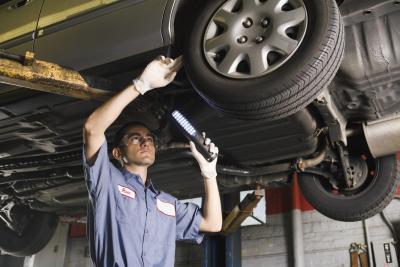Most people depend on their cars every day. It is important that we keep them maintained and in good running order. Not only does this help vehicles last longer, it also helps to keep them safer by identifying problems before things get bad enough to cause an accident. Although having your car routinely maintained by a mechanic is important, a periodic safety check can find issues in between trips to the shop. Just about any driver can perform the safety inspections on this checklist. If you aren’t sure about anything, ask your mechanic to show you.

A number of safety checks can be made visually, insuring that vehicle equipment is in place and in satisfactory conditions. Observe these items: Interior and side mirrors in place and in good condition, seat belts present without visible wear, all glass correctly installed and without chips or cracks, wiper blades in good condition, reflectors in place, gas cap fits tank properly, interior rug free of rips or bumps around control pedals, rubber covers are present on all pedals and tires have adequate tread with no signs of uneven wear.

Inspect and test these items: the brake pedal should not press all the way to the floor, shocks should not allow excessive sway, brakes stop the car appropriately, rack and pinion system has no leaks, the steering functions properly and the wheels don’t have any play when shaken in and out.

Check that dash warning lights all illuminate when the engine is started, verify that the high beam indicator light is operational, check that headlights (low and high beam), front and rear signal lights, tail lights and brake lights are working.

Inspect the all systems for signs of wear, cracks, missing parts or items that are no longer working. The steering wheel should operate smoothly. All lines and hoses should be in good condition without signs of wear or leakage and belts should have no cracks or signs of wear. Spark plus wires should be free of cracks and grease and the air filter should be properly in place. Fluid levels for all systems—especially brakes, engine oil and power steering—should be at the correct levels. Be sure the muffler is mounted properly and that there are no holes in the exhaust pipe and no significant fluid leakage from any part of the undercarriage.
